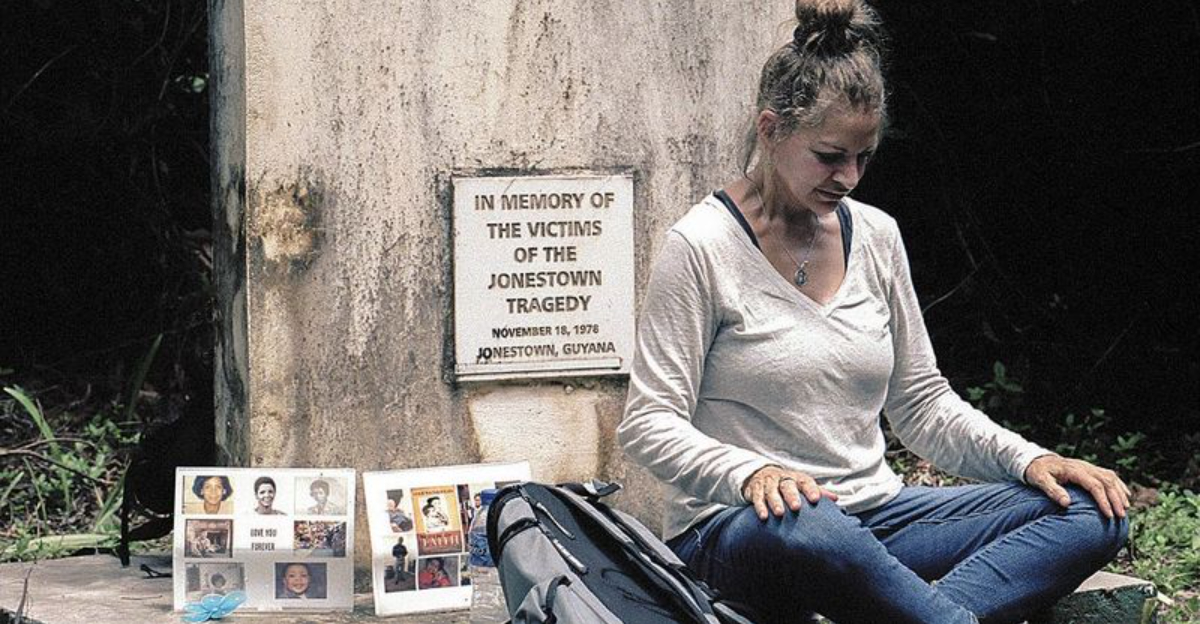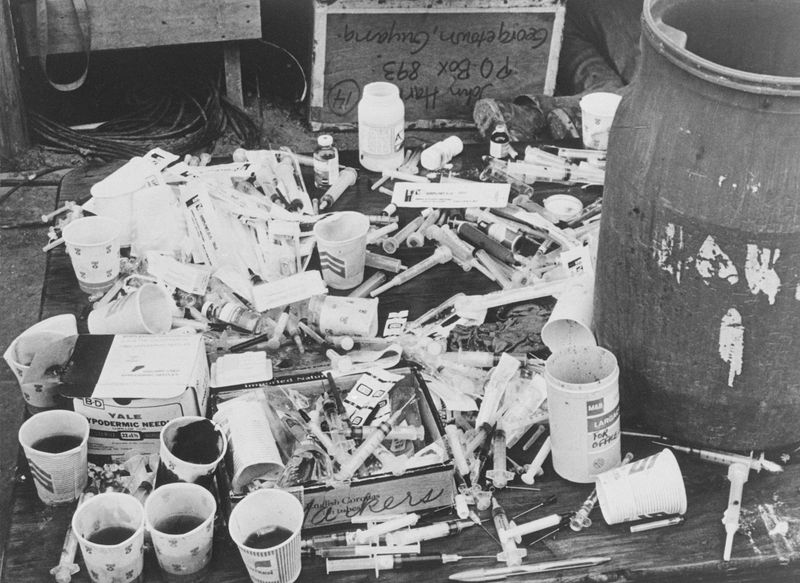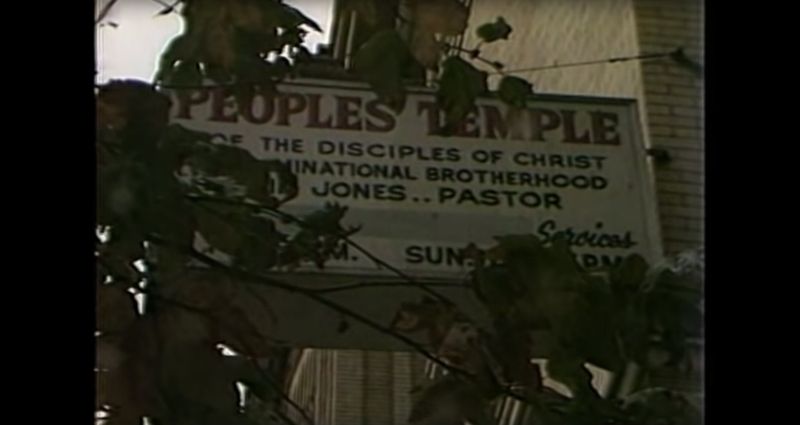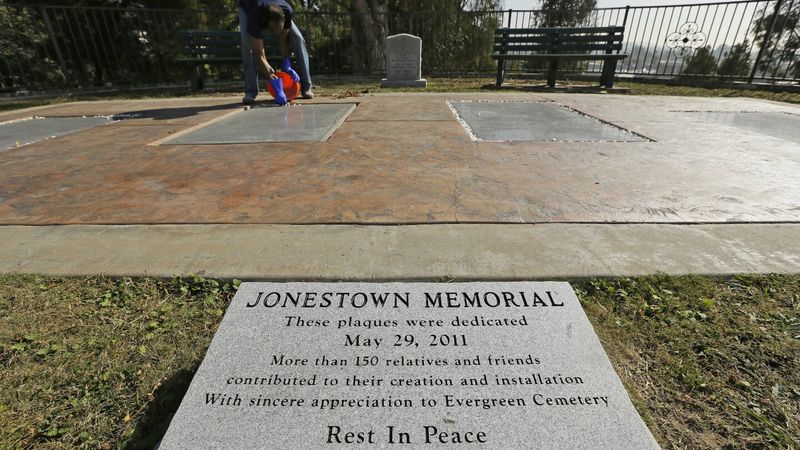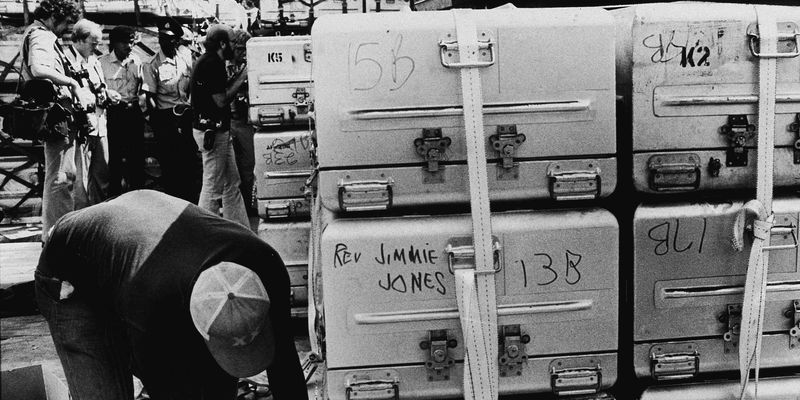Jonestown stands as a chilling reminder of the dangers of blind allegiance and the dark power of manipulation. Nestled in the Guyanese jungle, this settlement was where over 900 members of the People’s Temple died in a mass murder-suicide orchestrated by their leader, Jim Jones. These ten haunting details reveal the chilling reality of the Jonestown tragedy, each one a stark reminder of the lives lost and the horrors endured.
1. The Eeriness of the “White Night” Drills
The infamous “White Night” drills were a disturbing hallmark of life at Jonestown. Jim Jones, with his commanding presence, would orchestrate these rehearsals, conditioning his followers for the unthinkable. Under the eerie glow of torches, they would line up, cups in hand, believing it was their final moment, only to be told it was another test. This psychological manipulation broke their resistance, making the real event tragically seamless. By the time the true “White Night” arrived, fear had been replaced by a haunting resignation in many.
2. The Children Died First
The massacre at Jonestown spared no one, not even the innocent children. Parents were compelled to administer the deadly cyanide-laced Flavor Aid to their own offspring, a scene of unimaginable horror. The chilling audio recordings capture the chaos—screams of anguish, children crying, and amidst it all, Jim Jones’ calm, reassuring voice orchestrating the chaos. The children’s deaths were a tragic prelude, with parents following soon after under the weight of coercion and devastation. This moment, perhaps more than any other, encapsulates the absolute horror of Jonestown.
3. The Bodies Lay for Days in the Jungle Heat
The aftermath of the Jonestown massacre was a scene of unspeakable horror. The sweltering heat of the Guyanese jungle became a grotesque incubator for the tragedy that unfolded. When investigators finally arrived, they were met with a haunting tableau—hundreds of bloated bodies, decomposing under the relentless sun. Many were found holding hands, even in death. This grim scene was further intensified by the oppressive smell and the buzzing of flies, a stark reminder of the lives senselessly lost and the cruelty of the act.
4. The “Jonestown Sign” Was a Lie
At the heart of Jonestown stood a sign that bore a chilling irony. “Those who do not remember the past are condemned to repeat it,” it read. This message, meant as a reminder of historical atrocities, was twisted by Jim Jones to justify his own. It stood as a constant, hollow reminder of the manipulation and control that permeated every aspect of life in Jonestown. The sign’s message, meant to warn against repeating history’s mistakes, became a bitter symbol of the very horror it sought to prevent.
5. The Mass Grave in Oakland
In the aftermath of Jonestown, most victims found their final resting place far from the jungle. A mass grave in Oakland, California, became their resting place, a silent testament to the magnitude of the tragedy. The plaque there bears only a fraction of the names, as many victims were never identified. This grave, while a place of mourning, also serves as a poignant reminder of the countless lives affected by one man’s delusion. The mass grave stands as a solemn tribute to those who perished, their stories forever remembered.
6. The Survivors Who Hid in the Jungle
Amidst the chaos and horror of the Jonestown massacre, a handful of individuals managed to escape the clutches of death. They fled into the dense, shadowy jungle, driven by sheer will to survive. For some, survival brought its own burdens, as the guilt of escaping while others perished weighed heavily. Over time, some survivors succumbed to despair, choosing to end their lives. Their stories, however, are a testament to the resilience of the human spirit, and the complex, often painful, path of survival and healing.
7. Jones’ Creepy Throne Room
Jim Jones’ private space was as unsettling as his public persona. Within his cabin, he had a throne-like chair where he would preside, a self-styled king of his doomed domain. This room, a symbol of his inflated ego and control, was always under the watchful eyes of armed guards. They ensured no one left, reinforcing the inescapable grip Jones had over his followers. The throne room was a microcosm of Jonestown itself—a place of twisted authority and looming threat, where fear ensured obedience.
8. The Poison Was Everywhere
The infamous poison that claimed the lives of Jonestown’s residents was not a last-minute decision. Vats of cyanide were prepared well in advance, evidence of the premeditated nature of the massacre. The poison was everywhere, a pervasive threat that loomed over the community. For those who attempted to flee, Jones’ enforcers ensured their compliance, using syringes to inject those who resisted. This calculated approach to death highlighted the terrifying control Jones wielded and the lengths he would go to maintain it.
9. The Last Words on the Death Tape
The notorious “death tape” captures the chilling final moments of Jonestown. In a voice devoid of emotion, Jim Jones urged his followers to “take the potion like they used to take in ancient Greece, and step over quietly.” His words, both haunting and manipulative, were the prelude to a tragic end. The tape’s abrupt silence stands as a haunting testament to the conclusion of a horrific chapter. This recording is a chilling reminder of Jones’ control and the devastating power of his persuasion.
10. The Site Is Now Just an Empty Field
Today, the site of Jonestown is a haunting echo of its past. Overgrown and abandoned, the once-bustling settlement is now just an empty field, a stark reminder of the atrocities that took place. Locals avoid the area, believing it to be haunted by the spirits of those who perished. The air feels heavy with history, each rustling leaf a whisper of the past. Jonestown’s physical absence underscores the psychological scars it left behind, a void where life once thrived but now only memories linger.
